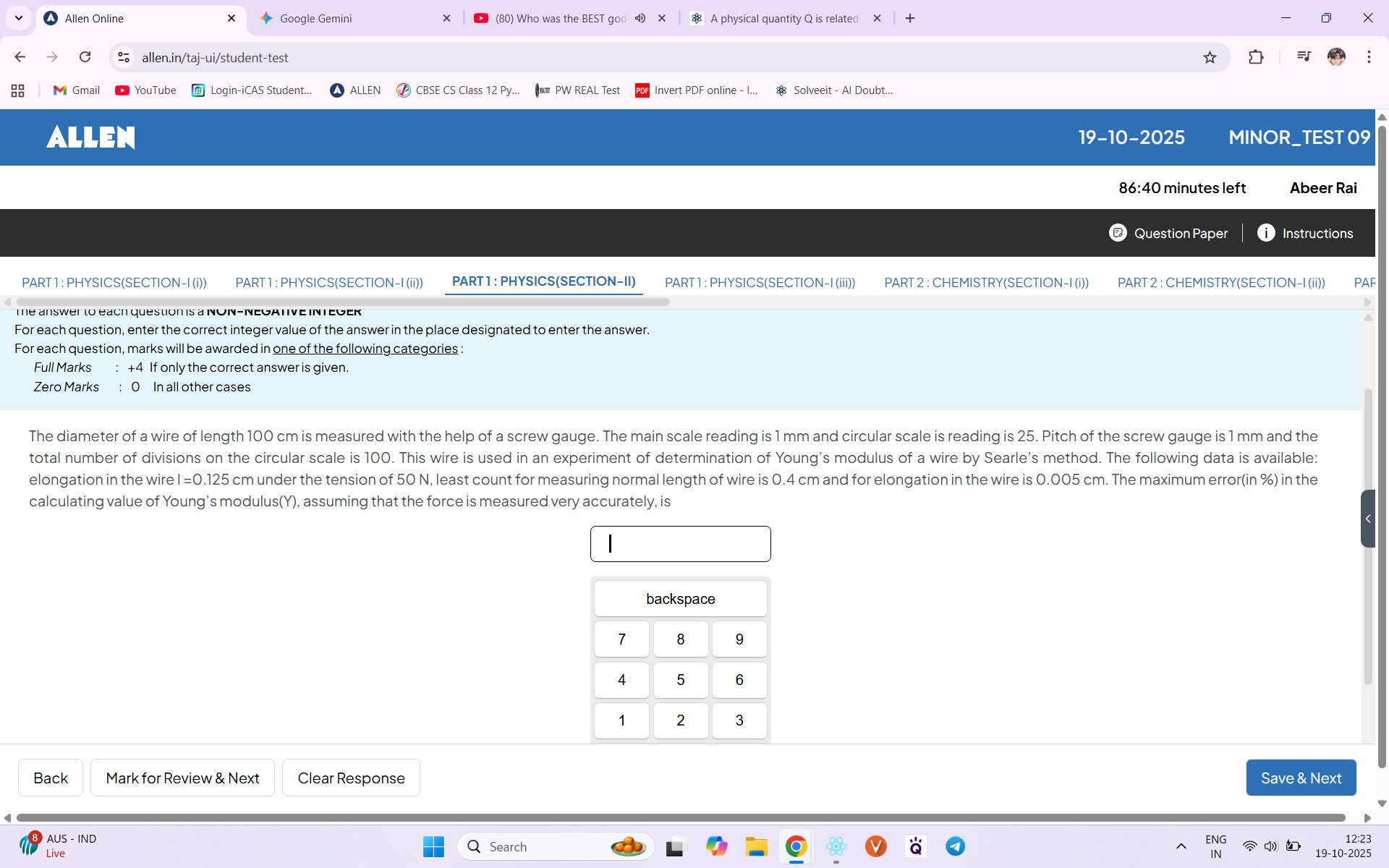Question
Question: The diameter of a wire of length 100 cm is measured with the help of a screw gauge. The main scale r...
The diameter of a wire of length 100 cm is measured with the help of a screw gauge. The main scale reading is 1 mm and circular scale is reading is 25. Pitch of the screw gauge is 1 mm and the total number of divisions on the circular scale is 100. This wire is used in an experiment of determination of Young's modulus of a wire by Searle's method. The following data is available: elongation in the wire I = 0.125 cm under the tension of 50 N, least count for measuring normal length of wire is 0.4 cm and for elongation in the wire is 0.005 cm. The maximum error(in %) in the calculating value of Young's modulus (Y), assuming that the force is measured very accurately, is

6.0
5.0
4.0
3.0
6.0
Solution
The formula for Young's modulus is Y=AlFL, where A=4πd2. Thus, Y=πd2l4FL. The maximum percentage error in Y, assuming force F is accurate, is given by YΔY×100%=(LΔL+2dΔd+lΔl)×100%. The diameter d is calculated from screw gauge readings: d=0.125 cm with an error Δd=0.001 cm. The relative error is dΔd=0.1250.001=0.008. The length L=100 cm with error ΔL=0.4 cm, so LΔL=1000.4=0.004. The elongation l=0.125 cm with error Δl=0.005 cm, so lΔl=0.1250.005=0.04. Substituting these values: YΔY×100%=(0.004+2×0.008+0.04)×100%=(0.004+0.016+0.04)×100%=0.060×100%=6.0%.
